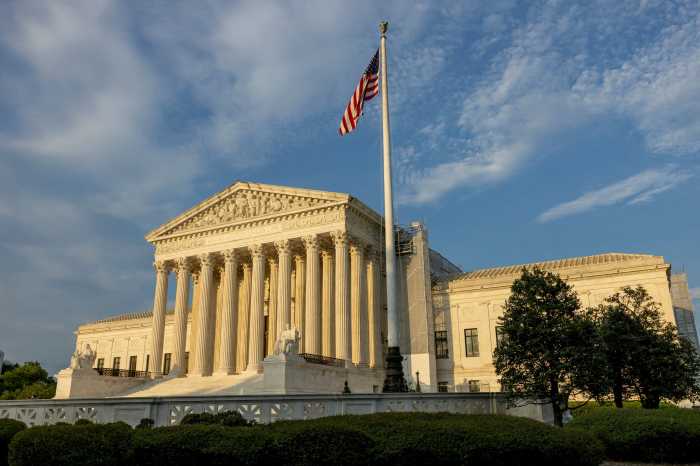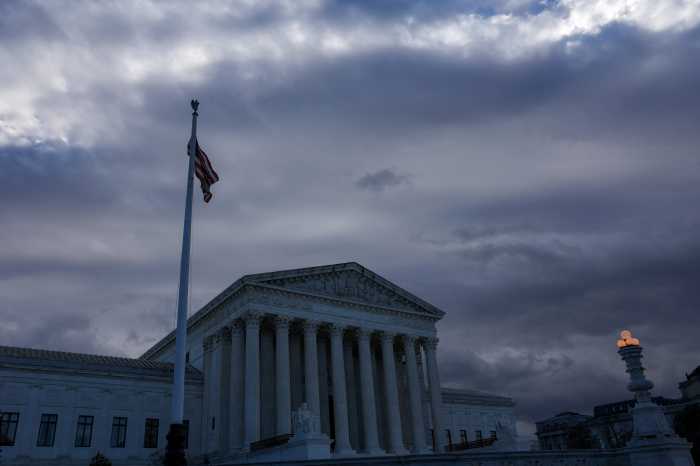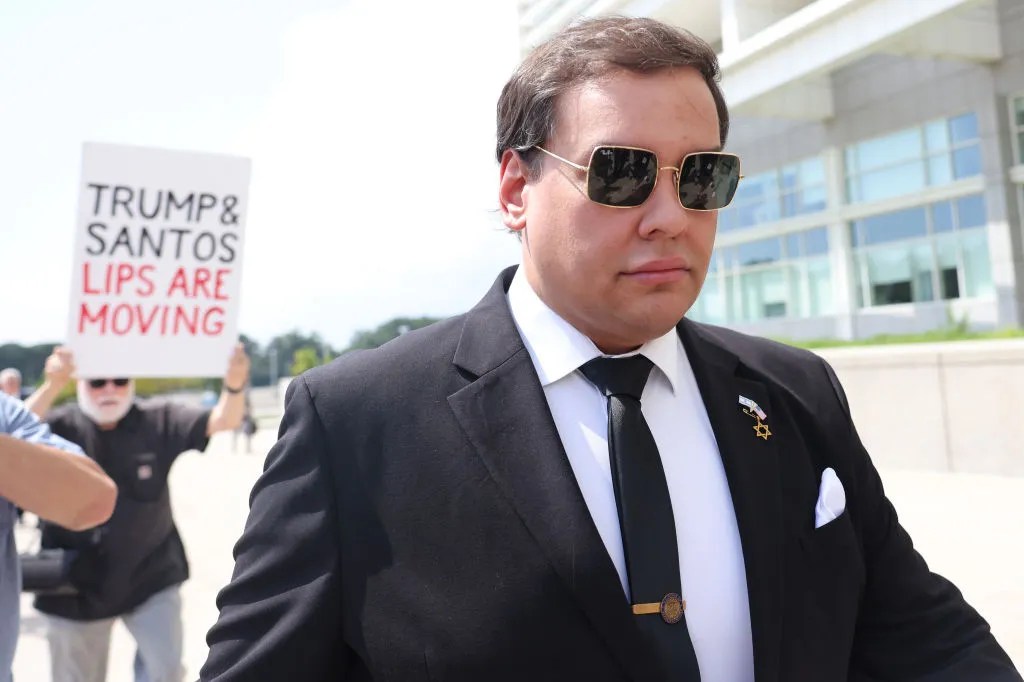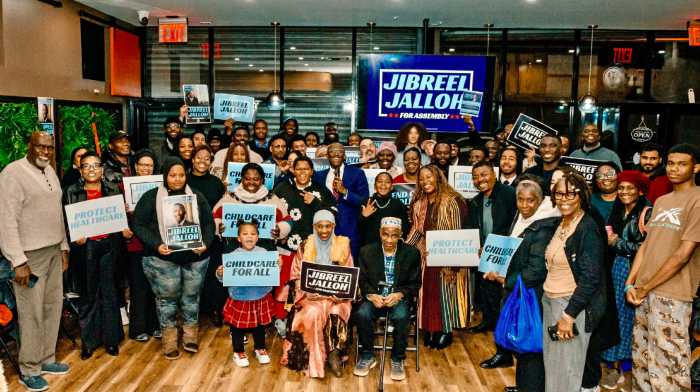Unanimously reversing a decision by the Cincinnati-based US Court of Appeals for the Sixth Circuit, the US Supreme Court held on June 5 that an Ohio federal district court should not have granted summary judgment against Marlean A. Ames, a straight woman, because of her failure to provide evidence that her employer, the Ohio Department of Youth Services, is “that unusual employer who discriminates against the majority.”
The Sixth Circuit refers to this as the “background circumstances” requirement and used it in this case to reject Ames’ claim that she was denied a promotion and then demoted because of her sexual orientation. This was not enough, ruled the Sixth Circuit, to prove that the position she sought was given to a lesbian, and that after her demotion a gay man got her former job, because she was a straight woman.
Ames began working for the department, which administers the state’s juvenile justice system, in 2004. She started in a secretarial position and worked her way up to become a program administrator. In 2019, the department created a new management position for which Ames applied, for which she likely qualified. She was interviewed, but the department gave the position to a lesbian. A few days after her interview, Ames was told that she was being removed from her program administrator position. She was offered her old secretarial position at reduced pay, which she accepted. Then she learned that the department hired a gay man to be the new program administrator.
She filed suit under Title VII, which has been interpreted by the Supreme Court in 2020 in its Bostock decision to apply to claims of discrimination because of a person’s sexual orientation, as a form of sex discrimination. Ruling on the employer’s motion for summary judgment, the court faulted Ames for failing to show “background circumstances” that would overcome the court’s belief that employers generally do not discriminate against “majority group” employees. As a straight person, the court considered her to be a “majority group” plaintiff, even though in the context of a sex discrimination case one might consider a woman to be a “minority group” plaintiff.
Writing for the unanimous Supreme Court, Justice Ketanji Brown Jackson asserted that there is no basis in the text of Title VII for imposing this special evidentiary burden on plaintiffs in so-called “reverse discrimination” cases involving discrimination claims by “majority group” employees. “As a textual matter,” wrote Justice Jackson, “Title VII’s disparate-treatment provision draws no distinction between majority-group plaintiffs and minority group plaintiffs, so the rules of evidence and proof should be the same regardless of whether the plaintiff is a member of the “majority.”
Jackson pointed out that the language of Title VII, making it unlawful “to fail or refuse to hire or to discharge any individual, or otherwise to discriminate against any individual with respect to his compensation, terms, conditions, or privileges of employment, because of such individual’s race, color, religion, sex, or national origin,” focuses on individuals rather than groups. (The italics were added by Justice Jackson.)
“Congress left no room for courts to impose special requirements on majority-group plaintiffs alone,” she concluded, showing that the Court’s precedents “reinforce that understanding of the statute.”
When Congress enacted Title VII in 1964, it was clear that the main motivation behind the statute was to outlaw discrimination against people whose race, color, religion, sex or national origin marked them as a member of a minority group with a history of discriminatory treatment, but the language Congress used was not so limited. Over the next few decades, the court made clear that the statute extended to protect white people from discrimination because of their race or color; protected Christians, who make up a majority of people in the United States; and would protect people from all ethnic and national backgrounds from being discriminated against, even the stereotypical white Anglo-Saxon Protestants (WASPs)! To do otherwise would be to deny equal protection of the law by enacting a law favoring one group over another.
In a concurring opinion, Justice Clarence Thomas, joined by Justice Neil Gorsuch, wrote to “highlight the problems that arise when judges create atextual legal rules and frameworks.” He pointed out that the lower federal courts were divided over whether it was appropriate to require “majority” plaintiffs to show “special circumstances,” when no such requirement is imposed on “minority” plaintiffs, and even those who purported to apply the rule might have trouble deciding in any particular case whether a plaintiff was part of a “the minority” or “the majority.” Furthermore, the courts adopting the “special circumstances” rule have generally been vague in spelling out how a “majority” plaintiff could meet the requirement.
In this case, the Sixth Circuit suggested that Ames might have shown that the management officials making these decisions were gay and thus biased towards gay applicants for the positions. But Ames presented no evidence as to the sexual orientation of the managers, or any record of favoritism towards gay people in that department.
Justice Thomas also criticized the analytical framework purportedly used by the trial courts to decide summary judgment motions when there is no “direct evidence” of discriminatory intent, as in this case, derived from an early Title VII case called McDonnell Douglas Corporation v. Green, another atextual legal rule devised by the Supreme Court in an opinion by Justice Lewis Powell. Justice Thomas urged the court to take up the question of abandoning the McConnell Douglas methodology in an appropriate future case.
The bottom line is to loosen the requirements for bringing and winning a “reverse-discrimination” case in those circuits that had adopted the “background circumstances” rule, effectively eliminating the presumption that it is “unusual” for an employer to discriminate against “majority” employees. The ultimate burden of proof, however, is always on the plaintiff to show, by a preponderance of the evidence presented to the court, that they were intentionally discriminated against because of their race or color, religion, sex (including sexual orientation or transgender status), or national origin.
The Supreme Court vacated the Sixth Circuit’s ruling and sent the case back for the employer’s summary judgment motion to be decided without reference to any “background circumstances” requirement.





































